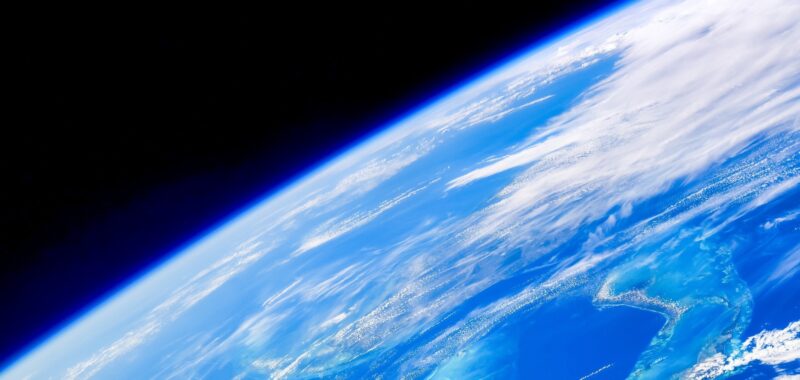Water is at the center of one of the enduring questions about how life first formed on Earthr. More specifically, where did the very first water molecules form, and how? In 2020, researchers at France’s University of Lorraine announced evidence seen in a meteorite known as Sahara 97096 that supported an increasingly popular theory: Earth’s original water ingredients hid inside meteorites that collided with the planet billions of years ago. But a team at the University of Oxford is now countering that claim, and says proto-Earth had all the hydrogen it needed to kickstart life. Their conclusions were published on April 16 in the journal Icarus, and come after analyzing a similar meteorite recovered from Antarctica.
The key to their counterargument resides in a rare type of space rock called enstatite chondrite. The meteorite’s composition is particularly significant to planetary scientists because it’s comparable to the planet as it was 4.55 billion years ago. While Sahara 97096 is an enstatite chondite, very few other specimens are known to exist on Earth. A specimen called LAR 12252 offers another example—and the University of Oxford’s team recently took the space rock for a field trip to the Diamond Light Source synchrotron in Harwell, Oxfordshire.

There, they used the particle accelerator facility to perform an X-Ray Absorption Near Edge Structure (XANES) spectroscopy. XANES works by directing X-rays onto a sample whose atoms absorb the energy. Doing so allows certain chemicals to form depending on an object’s elemental makeup, as well as causes atoms to bond in distinctive ways.
In this case, researchers were looking for compounds that included sulfur. The previous analysis of Sahara 97096 revealed traces of hydrogen in organic materials and non-crystalline sections of the meteorite. But at the time, it wasn’t clear if the remainder of Sahara 97096’s identifiable hydrogen was native to the rock, or if it came from external contamination on Earth.

Scientists at the University of Oxford theorized that using XANES spectroscopy may show hydrogen attached to LAR 12252’s large amounts of sulphur. The team first focused on the meteorite’s non-crystalline parts where hydrogen was previously found in Sahara 97096. During the experiment, however, they also accidentally analyzed neighboring sub-micrometer material. But it was this nearby section that contained hydrogen sulfide with five times more hydrogen than the non-crystalline parts. Conversely, sections of LAR 12252 with cracks and obvious contamination signs like rust showed very little or zero hydrogen. Because of this, the team believes it is extremely unlikely that LAR 12252’s hydrogen sulfide originated on Earth.
While this may at first sound like it supports the theory that meteorites carried the hydrogen needed for water to Earth, the study’s authors argue the opposite.
Remember how enstatite chondrite is basically identical to proto-Earth’s geological composition? The analysis of LAR 12252’s native amounts of hydrogen sulfide could imply that our planet had all the hydrogen it needed to form the very first water molecules that eventually allowed for life to begin.

“We were incredibly excited when the analysis told us the sample contained hydrogen sulphide—just not where we expected,” study lead Tom Barrett said in a statement. “Because the likelihood of this hydrogen sulphide originating from terrestrial contamination is very low, this research provides vital evidence to support the theory that water on Earth is native—that it is a natural outcome of what our planet is made of.”
According to study co-author James Bryson, the results make a strong case for Earth providing its own resources for the development of life.
“We now think that the material that built our planet… was far richer in hydrogen than we thought previously,” he added. “This finding supports the idea that the formation of water on Earth was a natural process, rather than a fluke of hydrated asteroids bombarding our planet after it formed.”
All that said, the findings can’t confirm the terrestrial life theory beyond a doubt. There’s still a chance hydrogen-heavy meteorites helped us along. Still, the new evidence makes a strong case that ancient Earth had the ability to form water all on its own—no space rocks needed.


